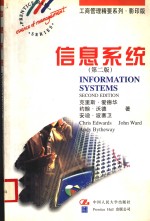
- 作 者:(英)克里斯·爱德华(Chris Edwards)等著
- 出 版 社:北京:中国人民大学出版社;普兰蒂斯霍尔出版公司
- 出版年份:1997
- ISBN:7300024939
- 标注页数:211 页
- PDF页数:221 页
请阅读订购服务说明与试读!
订购服务说明
1、本站所有的书默认都是PDF格式,该格式图书只能阅读和打印,不能再次编辑。
2、除分上下册或者多册的情况下,一般PDF页数一定要大于标注页数才建议下单购买。【本资源221 ≥211页】
图书下载及付费说明
1、所有的电子图书为PDF格式,支持电脑、手机、平板等各类电子设备阅读;可以任意拷贝文件到不同的阅读设备里进行阅读。
2、电子图书在提交订单后一般半小时内处理完成,最晚48小时内处理完成。(非工作日购买会延迟)
3、所有的电子图书都是原书直接扫描方式制作而成。
Contents 1
1 Setting the scene 1
A framework for understanding 1
The structure and purpose of the book 6
2 What are information systems? 8
Classification of systems 10
A model of the evolution of systems 16
Summary 20
3 Issues in information systems 21
The case study 24
Issues to be managed 26
4 Integrating information systems and business strategy 28
Introduction 28
The context of IS/IT strategy 30
The key inputs 33
Processes for managing the strategy 38
Establishing the IS/IT strategic planning process 41
Summary 46
5 Identifying business advantages from information systems 48
Introduction 48
A planning framework for determining the requirements 49
Assessing the business position within the industry in terms of IS opportunities and threats 53
Business process redesign 73
Critical success factor analysis 78
Information analysis 83
Summary 93
Introduction 95
6 Creating an environment for success 95
Application portfolio analysis 96
Generic IS/IT management strategies 102
The application portfolio in a multiple business unit organization 111
Issues in managing the application portfolio 114
Evaluating IS/IT investments 115
Setting priorities for applications 121
Summary 125
7 Managing information systems development 127
Introduction 127
Basic systems development 129
The main project activities 138
Requirements analysis-one key to success 149
Variations on a theme 159
Summary 169
8 Support for the system development process 171
Introduction 171
Supporting disciplines for information systems 175
Summary 183
9 Organization for managing IS/IT 185
Introduction 185
Centralization versus decentralization 187
The major processes and responsibilities 189
Organizational issues 193
Summary 200
10 Conclusion:current and future directions 202
Index 206
